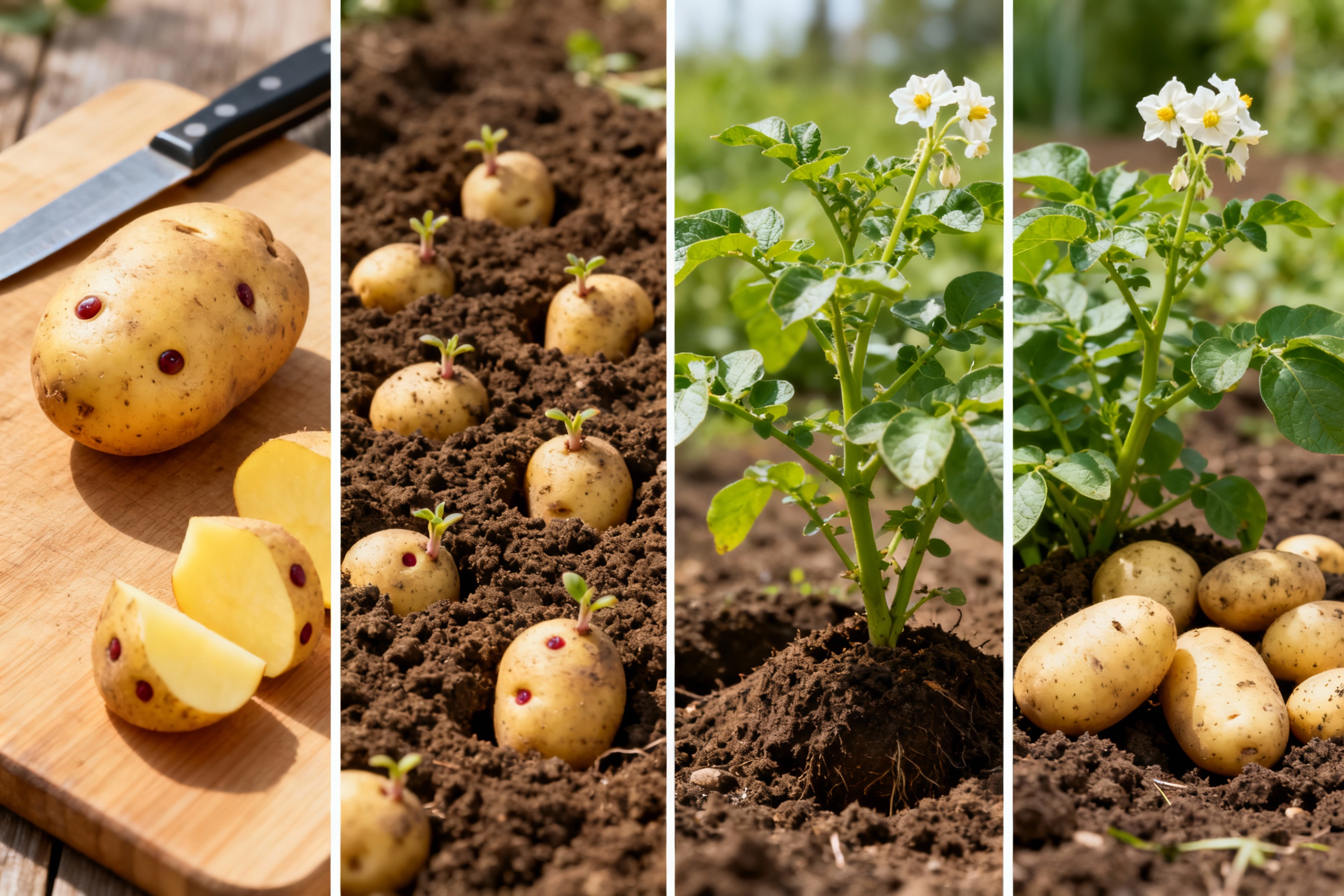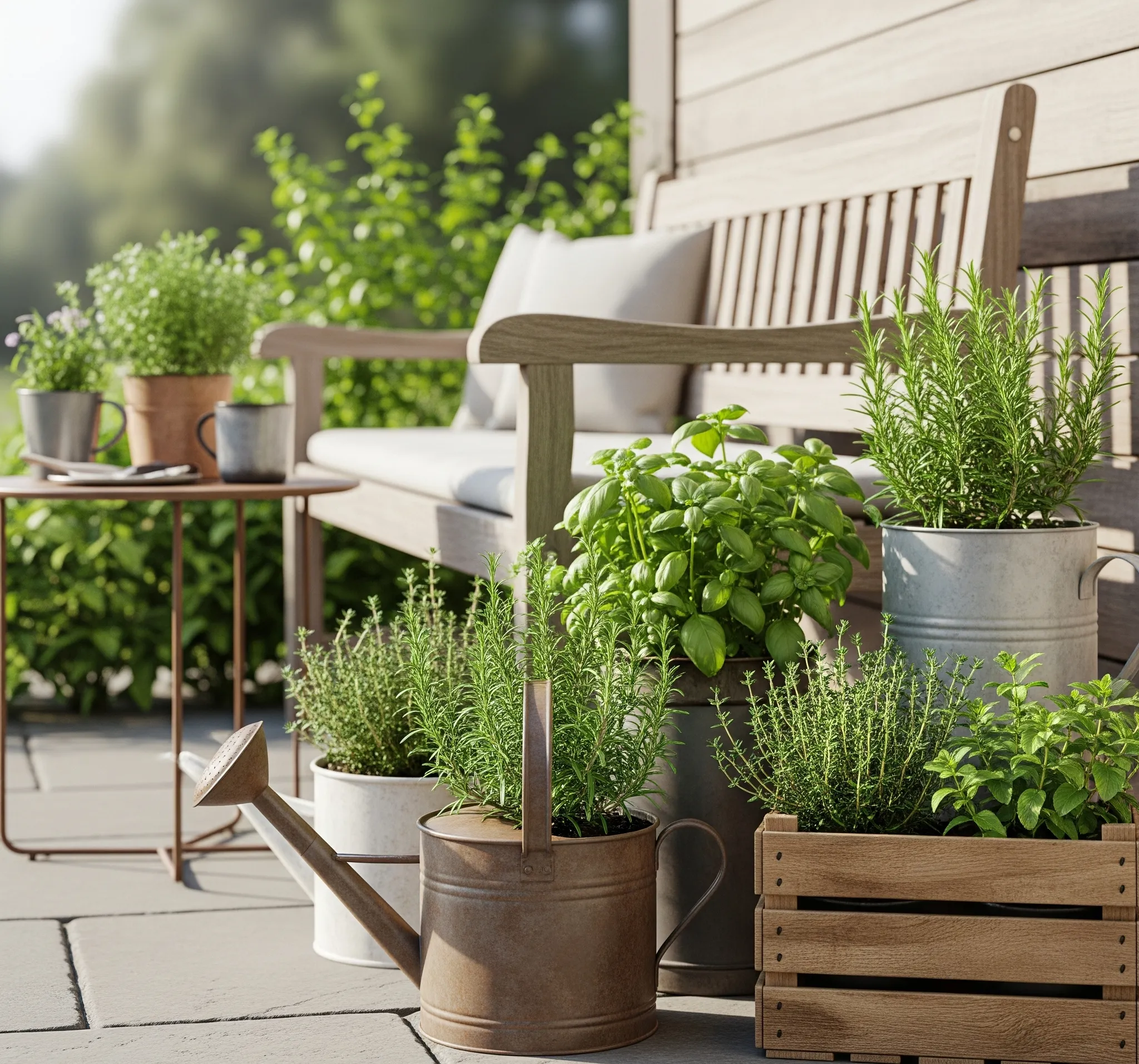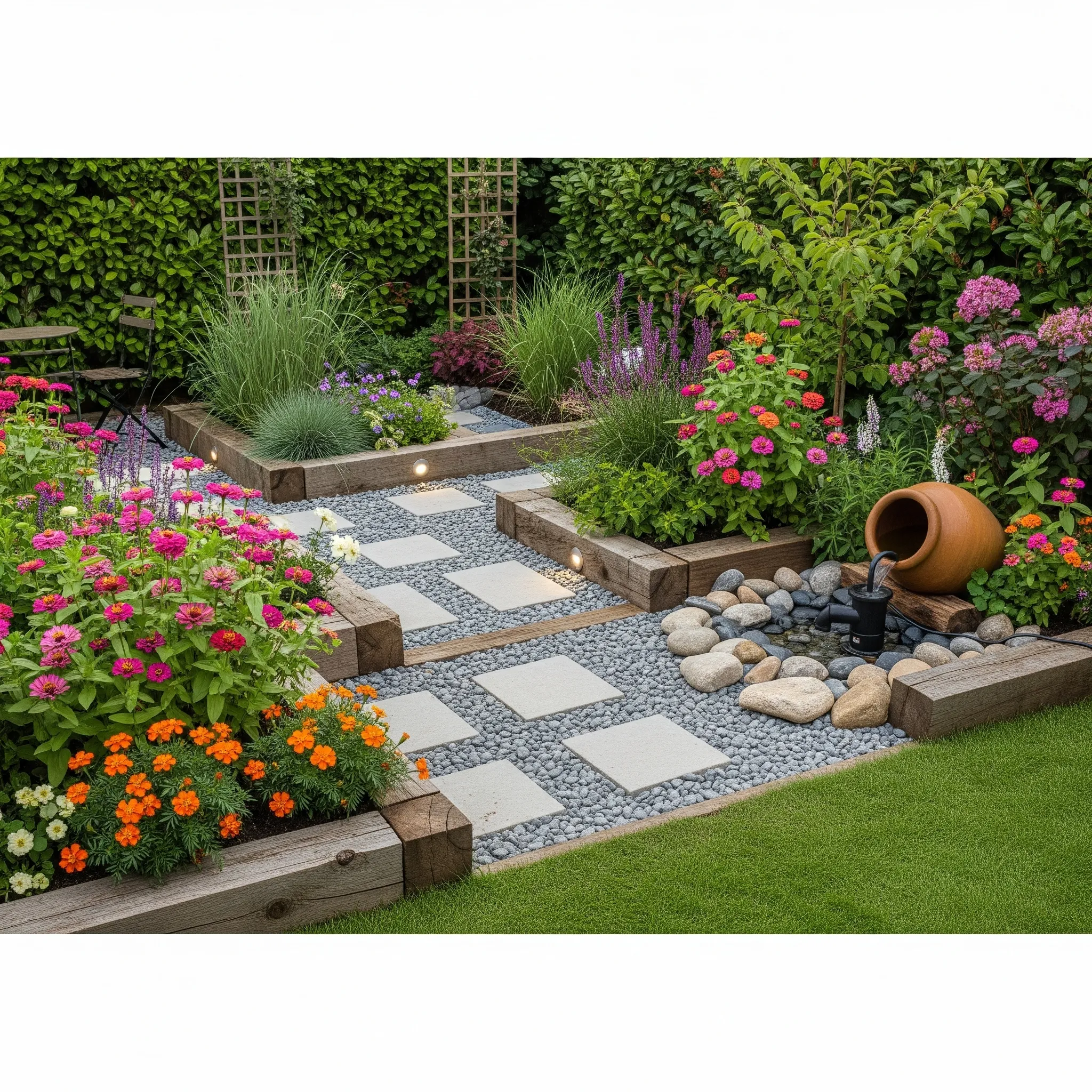You don’t need a farm, a tractor, or even special seed catalogs to grow potatoes. You need—wait for it—potatoes. That bag under your sink?
It might be the start of your mini potato empire. Growing spuds from spuds is easy, satisfying, and weirdly fun. Let’s turn those sprouting tubers into baskets of buttery gold.
Why Growing Potatoes From Potatoes Actually Works
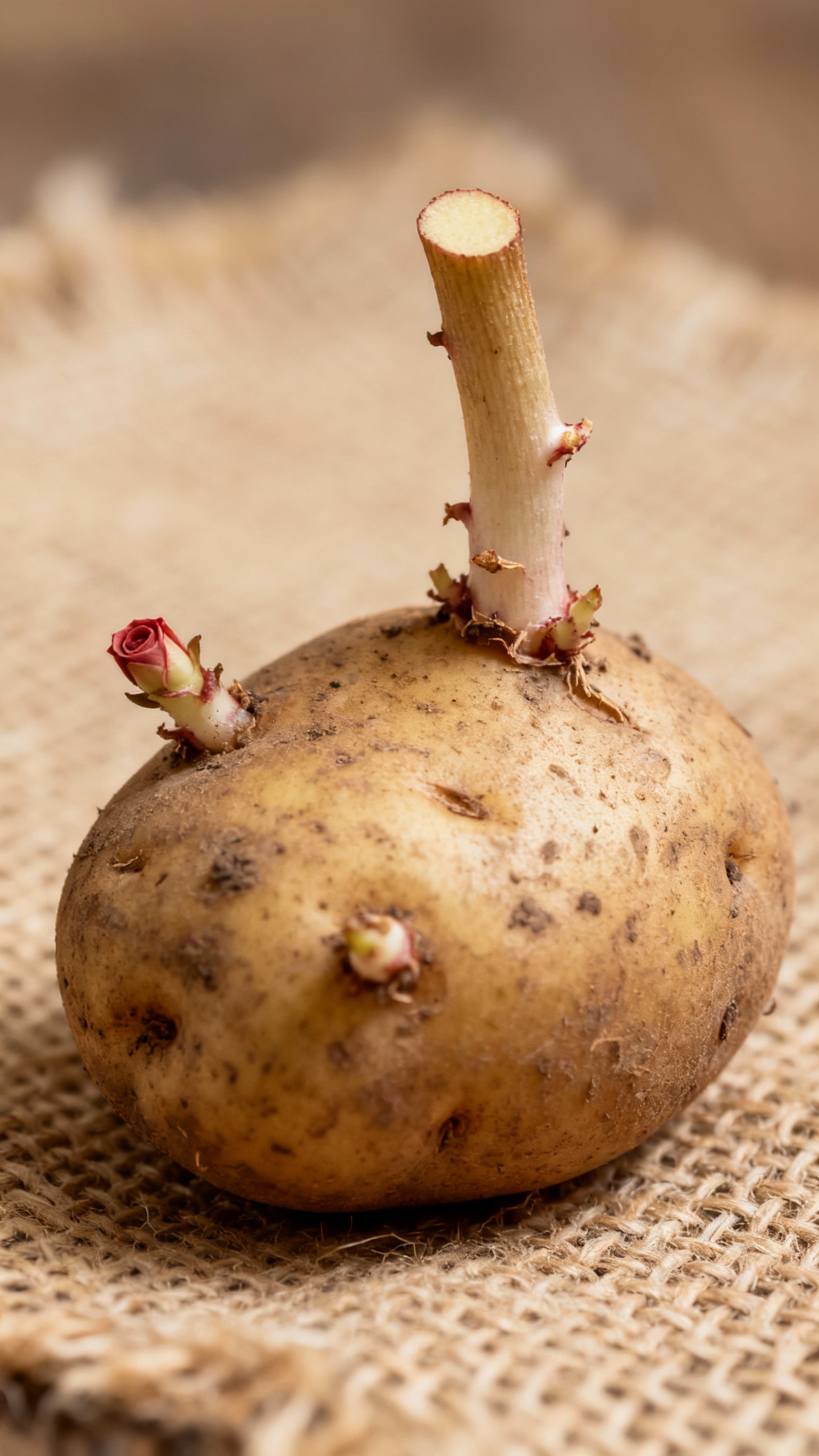
Potatoes store energy in their tubers, and each “eye” can grow into a new plant.
That means your pantry reject can give you a full crop with minimal effort. It’s cloning, but for carbs. Honestly, if you want a forgiving first-time crop, potatoes rank near the top. Key point: You don’t need fancy skills.
You just need a healthy potato with visible eyes and decent soil. That’s it. Magic spud science ensues.
Pick the Right Potato (This Matters)
Can you plant grocery store potatoes?
Sometimes. Should you plant seed potatoes? Usually yes.
- Seed potatoes: Certified disease-free and bred for planting.Higher success rate, more predictable yield.
- Grocery potatoes: Cheap and tempting, but often treated to prevent sprouting and may carry diseases. FYI, some still sprout. It’s a gamble.
- Varieties to try: Yukon Gold (buttery), Red Pontiac (early, reliable), Russet (bakers), Fingerlings (fancy vibes).
How many do you need?
Plan on 1–2 pounds of seed potatoes per 10 feet of row, or about 3–5 pieces for a large container.
Each piece can yield several pounds of potatoes if you give them decent care. IMO, start small and scale once you taste success.
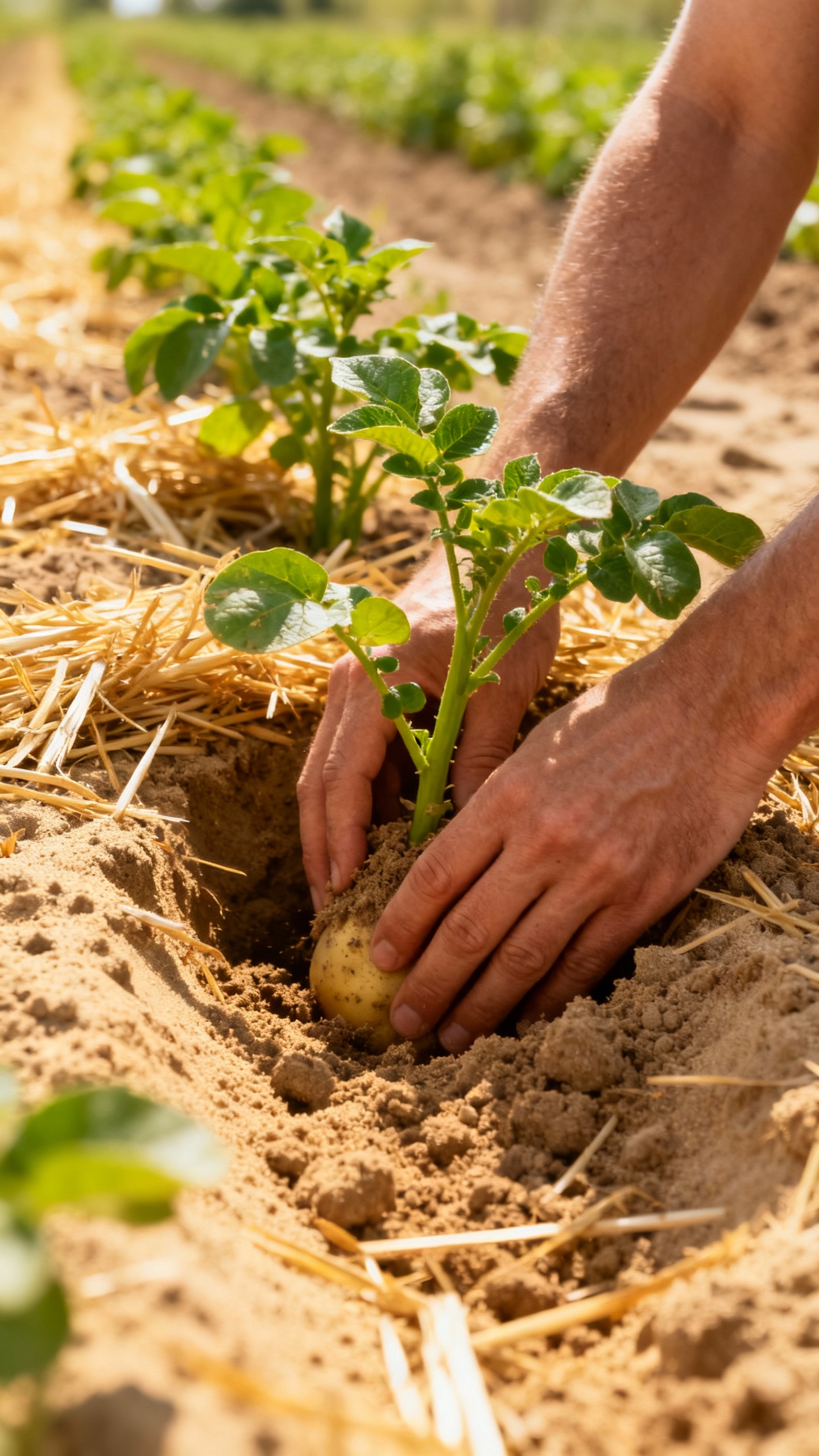
Chitting: Give Your Spuds a Head Start
You could plant right away, but chitting (pre-sprouting) speeds things up, especially in cool climates.
- Place potatoes in a bright, cool spot (60–70°F) for 2–3 weeks.
- Sprouts should reach about 1 inch and look stout, not leggy.
- Orientation matters: Eye clusters usually sit on the rose end (more eyes). Face that up when planting.
To cut or not to cut?
If tubers are large, cut them into chunks with 1–2 strong eyes each.
Let the cut sides dry and callus for 1–2 days to prevent rot. If they’re small (egg-sized), plant whole. Easy.
Soil, Sun, and Space: Set the Stage
Potatoes don’t ask for much, but they do like a comfy bed.
- Sun: Full sun, 6–8 hours minimum.
- Soil: Loose, well-drained, slightly acidic (pH 5.5–6.5).Sandy loam = chef’s kiss.
- Prep: Mix in compost. Avoid heavy doses of fresh manure; it can boost scab and make foliage go wild.
- Spacing: 12 inches between seed pieces, 30–36 inches between rows. Containers?Aim for at least 10–15 gallons per plant.
Containers and Grow Bags
No yard? No problem. Use a deep pot or grow bag.
Start with 4–6 inches of soil, place pieces, cover lightly, and add soil as they grow. It’s tidy, productive, and looks surprisingly sleek on a patio.
Planting: The Surprisingly Simple Part
Ready to commit spud?
- Dig trenches or holes 6–8 inches deep.
- Place seed pieces eye-side up.
- Cover with 3–4 inches of soil at first. You’ll add more later.
Pro tip: Don’t drown them.
Consistent moisture beats heavy soaking. Think evenly damp, not swampy.
Hilling = Bigger Harvests
As stems grow 6–8 inches tall, mound soil or straw around them, leaving just the top leaves exposed. Repeat every couple of weeks.
Why? Potatoes form along buried stems. More hill = more real estate for tubers.
Also, hilling keeps light off tubers so they don’t turn green and bitter.
Watering, Feeding, and Keeping Trouble at Bay
Potatoes grow fast, but they need a little TLC.
- Water: 1–2 inches per week. Stay especially consistent during flowering and tuber formation.
- Fertilizer: Go easy on nitrogen. Use a balanced or slightly higher potassium fertilizer (like 5-10-10).Feed at planting and lightly again at hilling.
- Mulch: Straw or shredded leaves help conserve moisture and control weeds.
Pests and Diseases (Don’t Panic)
- Colorado potato beetles: Hand-pick adults and larvae. Neem or spinosad can help if they get rowdy.
- Aphids: Blast with water or use insecticidal soap.
- Blight: Water at soil level, not overhead. Space plants for airflow.Remove infected foliage fast.
- Scab: Slightly acidic soil and steady moisture reduce it. Rotate crops every year or two.
FYI: Don’t plant potatoes where you grew tomatoes, peppers, or eggplants last season. Same family, same diseases—keep them separated like feuding rock bands.
Harvest Time: Read the Plant, Not the Calendar
You can technically pull “new potatoes” early, but full-sized tubers take a bit longer.
- New potatoes: 2–3 weeks after flowering.Gently dig around and pull a few.
- Main harvest: When foliage yellows and dies back. Wait 1–2 weeks after the tops die for the skins to toughen.
How to Harvest Without Tears
Use a garden fork and lift from the side, not straight down. Work slowly to avoid stabbing your precious spuds.
In containers, just dump and sift—ridiculously satisfying.
Curing and Storage
Cure potatoes in a dark, cool, well-ventilated spot (45–60°F) for 1–2 weeks. This firms the skins and heals tiny nicks. Then store in a dark place around 40–50°F.
Keep them dry and away from onions. Onions speed sprouting like they’re caffeinated.
Lazy Methods That Still Work
You don’t need to break your back to grow potatoes. Try these minimal-effort tactics:
- Straw method: Lay seed pieces on soil, cover with 6–8 inches of clean straw, and add more as they grow.Harvest is as easy as lifting straw layers.
- Tower or cage: Stack soil and straw in a cylinder and plant pieces near the edges. Not always higher yield, but great for tight spaces.
- Trench-and-mulch hybrid: Shallow trench + heavy mulch = fewer weeds, happy spuds.
FAQ
Can I use sprouted grocery store potatoes?
Yes, but it’s a roll of the dice. They may carry diseases and could be treated to prevent sprouting.
If they’ve already sprouted and look healthy, go for it in a small test bed or container. If you want reliable results, use certified seed potatoes.
How many potatoes do I get from one seed piece?
Expect anywhere from 3 to 10+ tubers per piece depending on variety, soil, water, and luck. A good season can give you a couple of pounds per plant.
Not bad for something that started next to your dish soap.
My potatoes turned green. Are they safe?
Nope. Green indicates chlorophyll and usually solanine, which tastes bitter and can make you sick.
Just cut off small green patches, but if a whole tuber looks green, compost it.
Do I need to chit potatoes?
Not strictly, but chitting gives you a head start and stronger early growth, especially in cool climates. In warm soil, you can skip it and still get a solid
